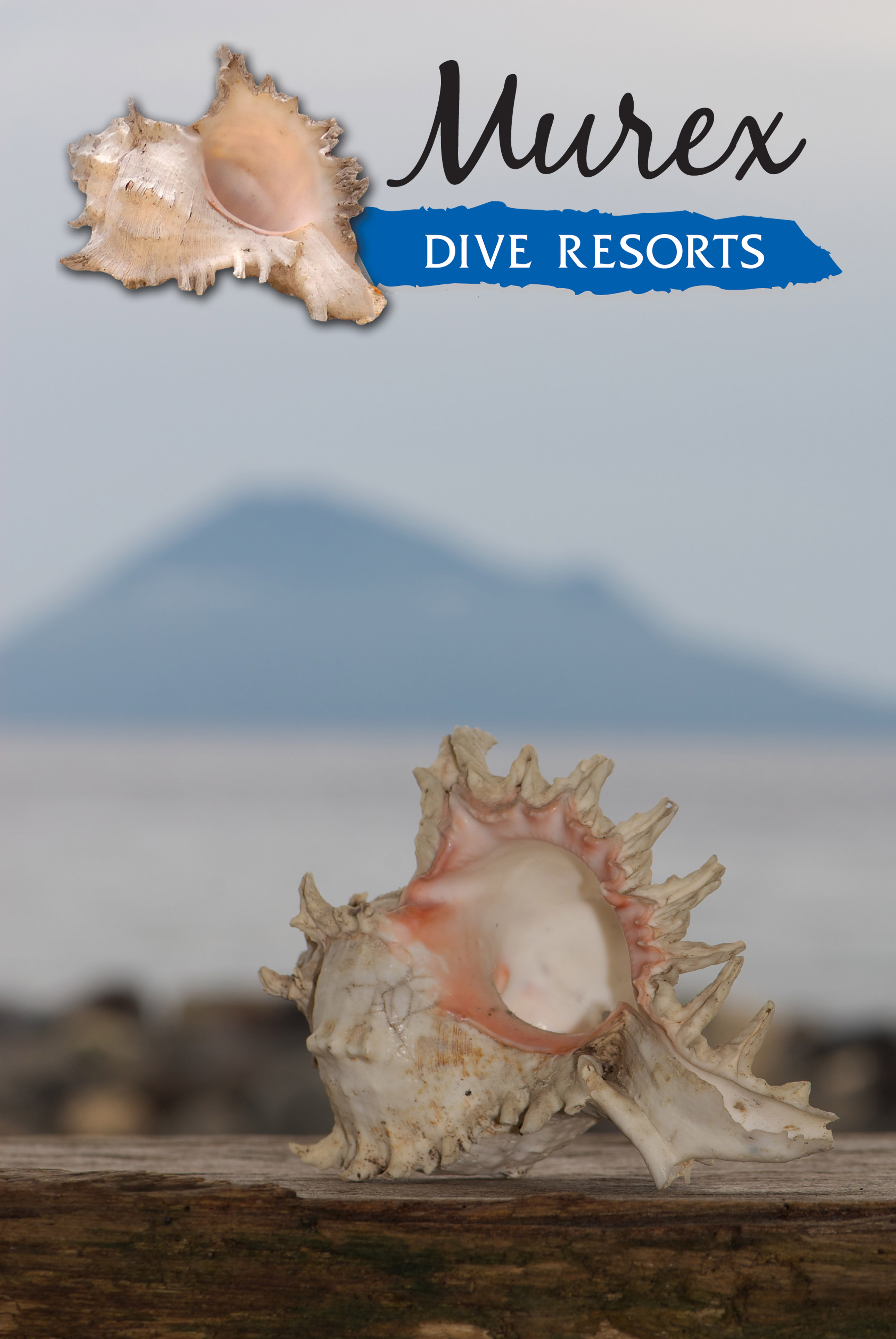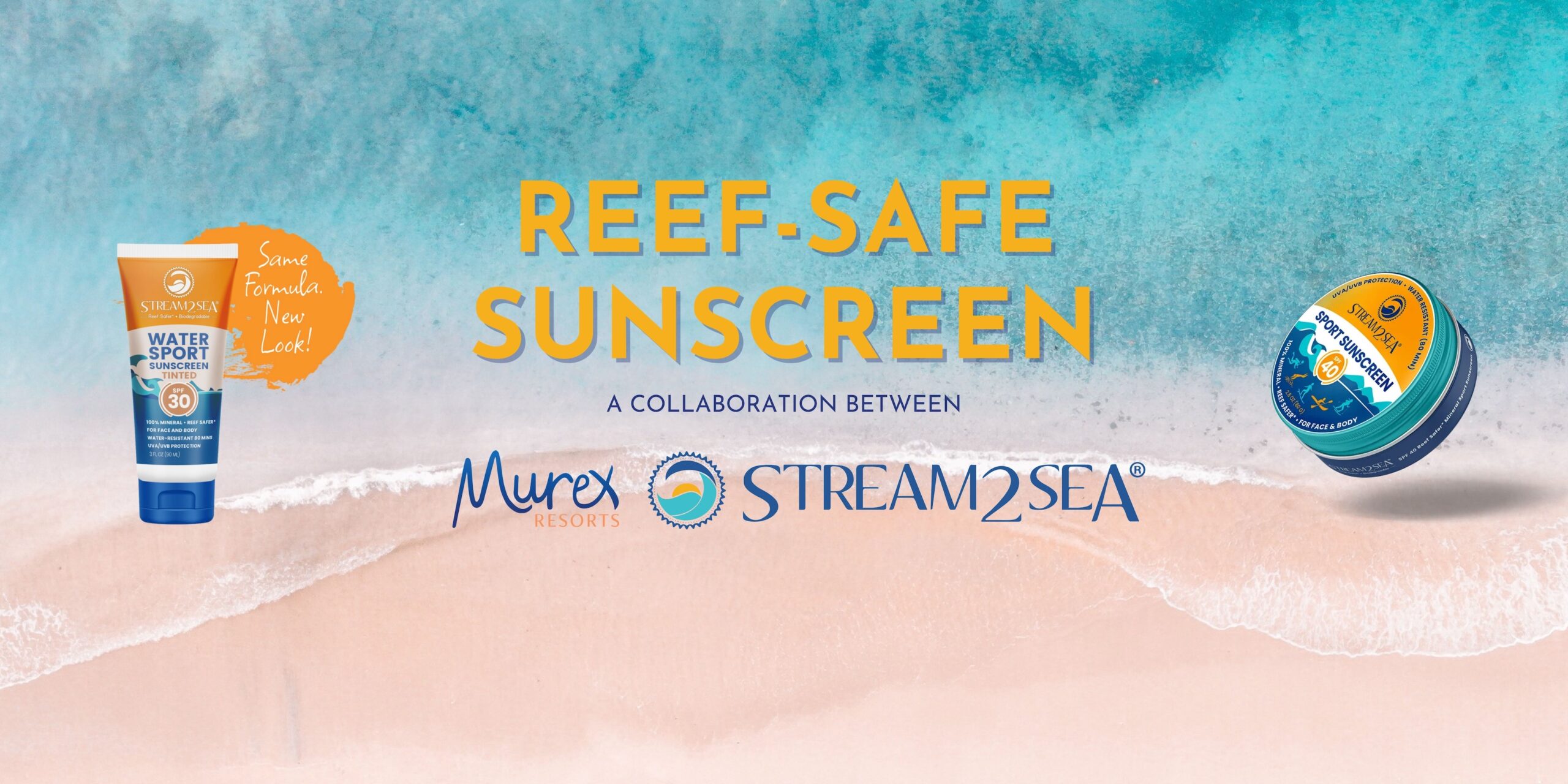From Greek Mythology to Manado Dive Resort
 Being new to Murex I was curious about the role the Batuna’s and Murex Resorts had in the evolution of diving in North Sulawesi. While speaking with Mrs. Batuna recently, she showed me a photo album a past guest had made and sent to her. It occurred to me that these guests must have really enjoyed their stay here to take the time to hand draw and send this little memento of their stay. The cover was signed by “Consuelo 1993”, on it she had drawn a Murex shell and used water colors to make a beautiful blue background, Consuelo had also written a little know fact about the Murex shell on her album cover (see image). I started to wonder “why the Murex shell as the logo” and “what else didn’t I know about this shell”?
Being new to Murex I was curious about the role the Batuna’s and Murex Resorts had in the evolution of diving in North Sulawesi. While speaking with Mrs. Batuna recently, she showed me a photo album a past guest had made and sent to her. It occurred to me that these guests must have really enjoyed their stay here to take the time to hand draw and send this little memento of their stay. The cover was signed by “Consuelo 1993”, on it she had drawn a Murex shell and used water colors to make a beautiful blue background, Consuelo had also written a little know fact about the Murex shell on her album cover (see image). I started to wonder “why the Murex shell as the logo” and “what else didn’t I know about this shell”?
First mystery solved; Murex stands for Manado UnderwateR EXploration. This is the perfect name if you think about all the work Dr. Batuna and the other explorers that have stayed at Murex, have contributed to the exploration of North Sulawesi.
 The Murex shell, Hexaplex trunculus is a medium sized species of sea snail, a marine gastropod mollusk in the family of Muricidae. Hexaplex trunculus has a broadly conical shell about 4 to 10 cm long. It has a rather high spire with seven angulated whorls. The shell is variable in sculpture and coloring with dark banding, in four varieties. The ribs sometimes develop thickenings or spines and give the shell a rough appearance
The Murex shell, Hexaplex trunculus is a medium sized species of sea snail, a marine gastropod mollusk in the family of Muricidae. Hexaplex trunculus has a broadly conical shell about 4 to 10 cm long. It has a rather high spire with seven angulated whorls. The shell is variable in sculpture and coloring with dark banding, in four varieties. The ribs sometimes develop thickenings or spines and give the shell a rough appearance
This species of sea snail is important historically because its hypobranchial gland secretes a mucus that the ancient civilizations used. This dye was possibly first used by the ancient Phoenicians as early as 1570 BC. Murex is the dye first famous as “Tyrian purple,” named for the city of Tyre, today in Lebanon but 3000 years ago the center from which that energetic trading nation, the Phoenicians, controlled a far-flung luxury trade in murex-dyed silks. The dye was greatly prized in antiquity because the color did not easily fade, but instead became brighter with weathering and sunlight. The Phoenicians rose to fame and power, because they could provide this luxury item, coveted by Kings, Queens and nobility in Rome. Thus the name became “Royal Purple” or “Tyrian Purple”.
In Greek mythology, the hero Heracles was walking along the beach in Tyre when his dog spied a murex shell. It took a chomp and found itself with a purple snout. Recognizing the potential of murex as a dye and as a trade item, Heracles passed the information along to the Phoenicians.
Murex snails produce most of their secretions in early spring, the season when Sirius, “the Dog Star,” is high in the Northern Hemisphere’s sky. Thus, the legend of Heracles and his dog may be a folktale reminding people of this seasonal activity.
Fun Fact: Today, the true colour “Tyrian purple”, like most high chroma pigments, cannot be accurately displayed on a computer display. You can’t always replicate nature.
Consuelo if you are out there somewhere? Thank you!
Refrences by: wikipedia and Phillipa Scott




